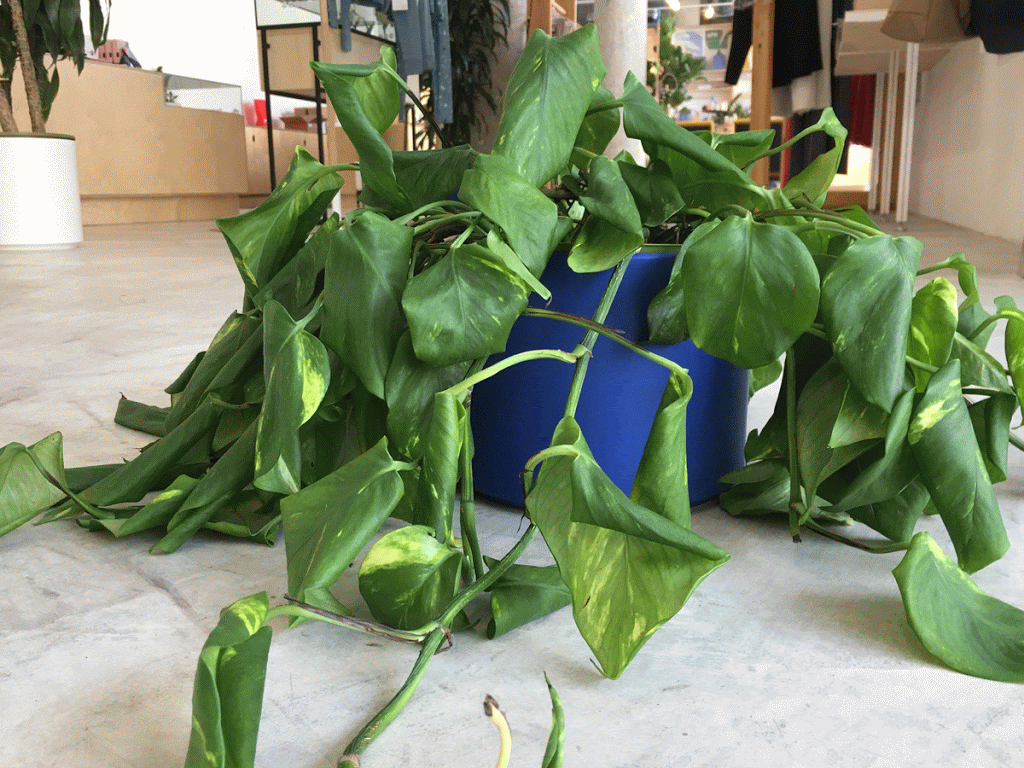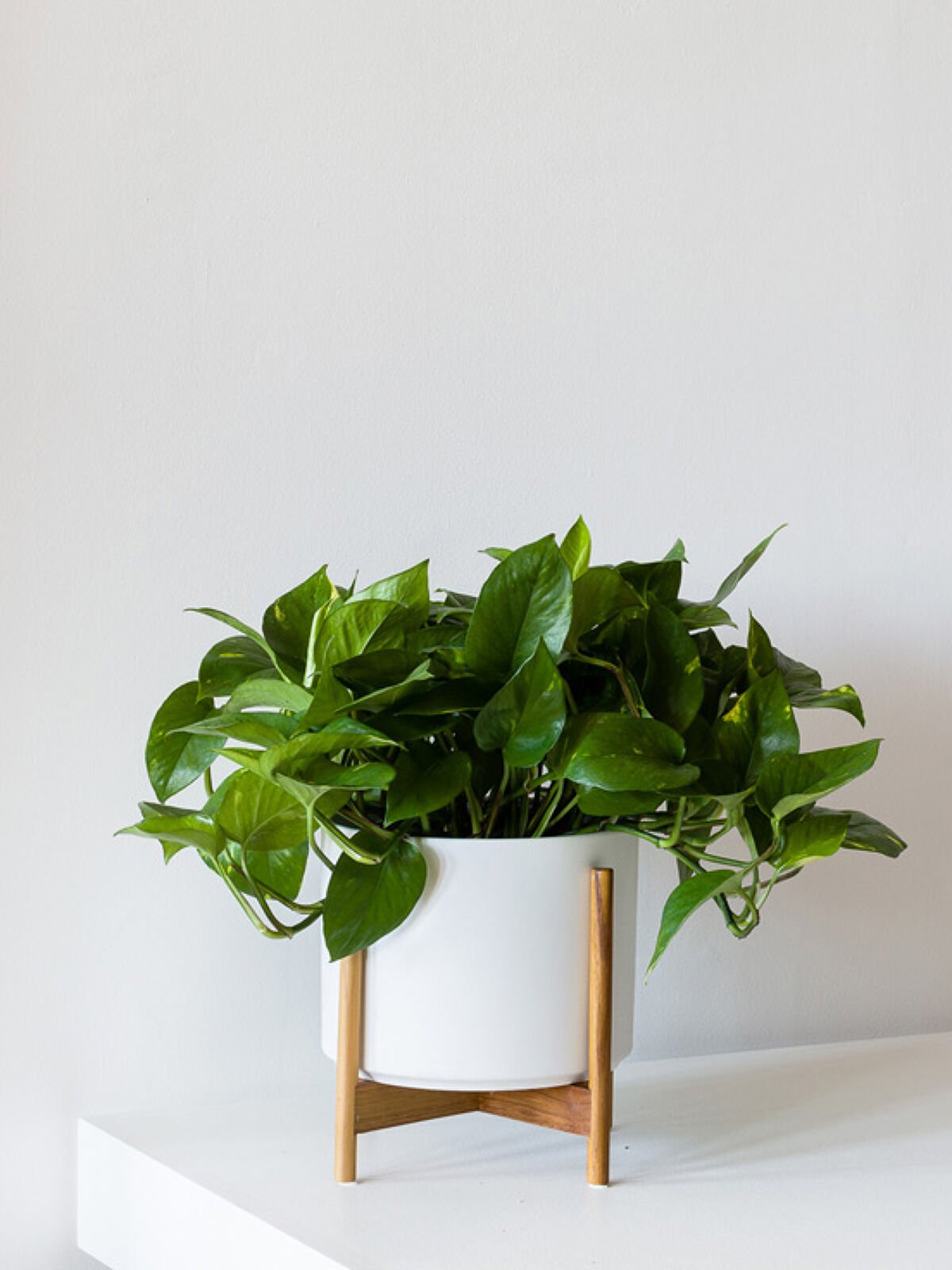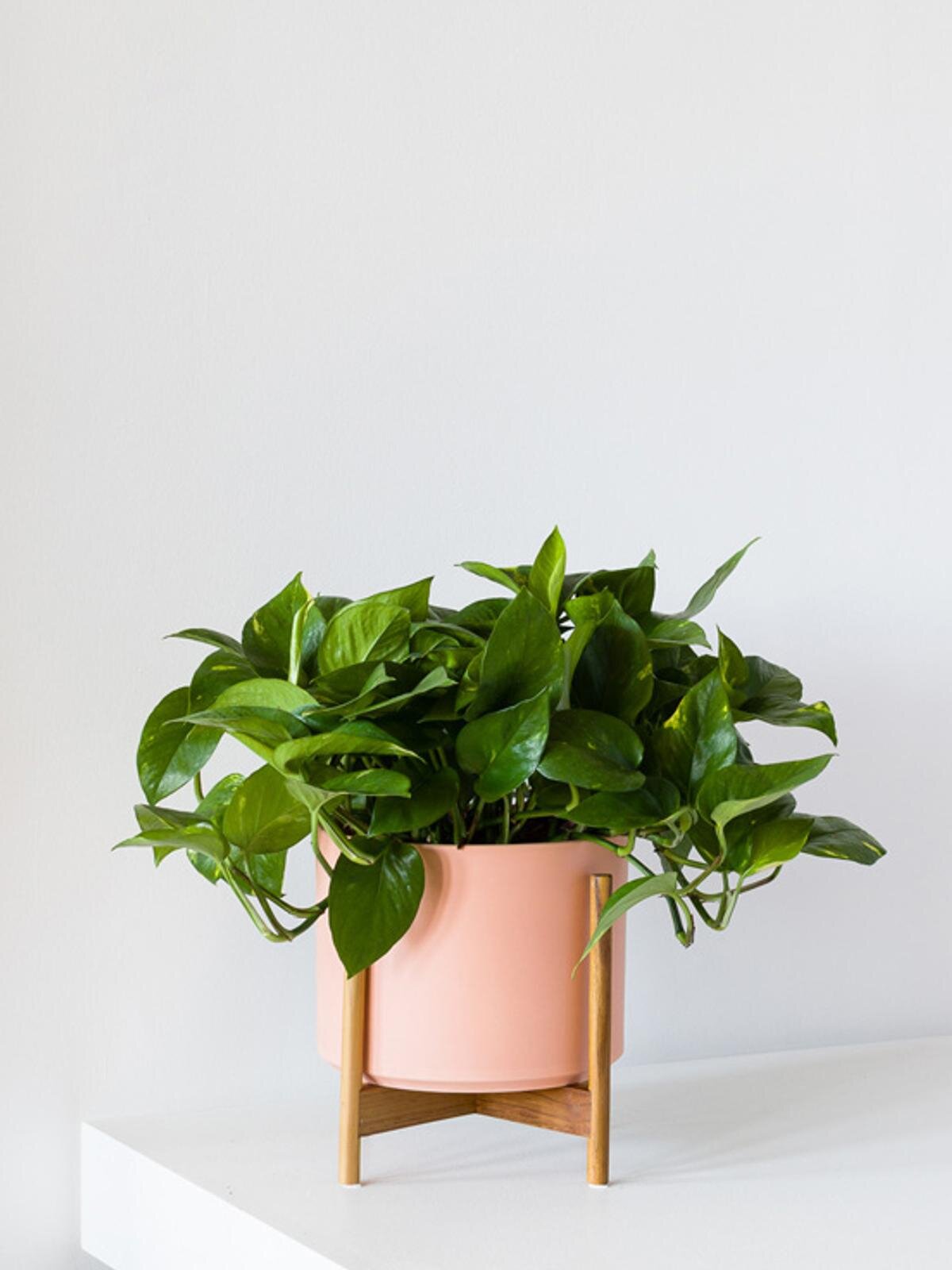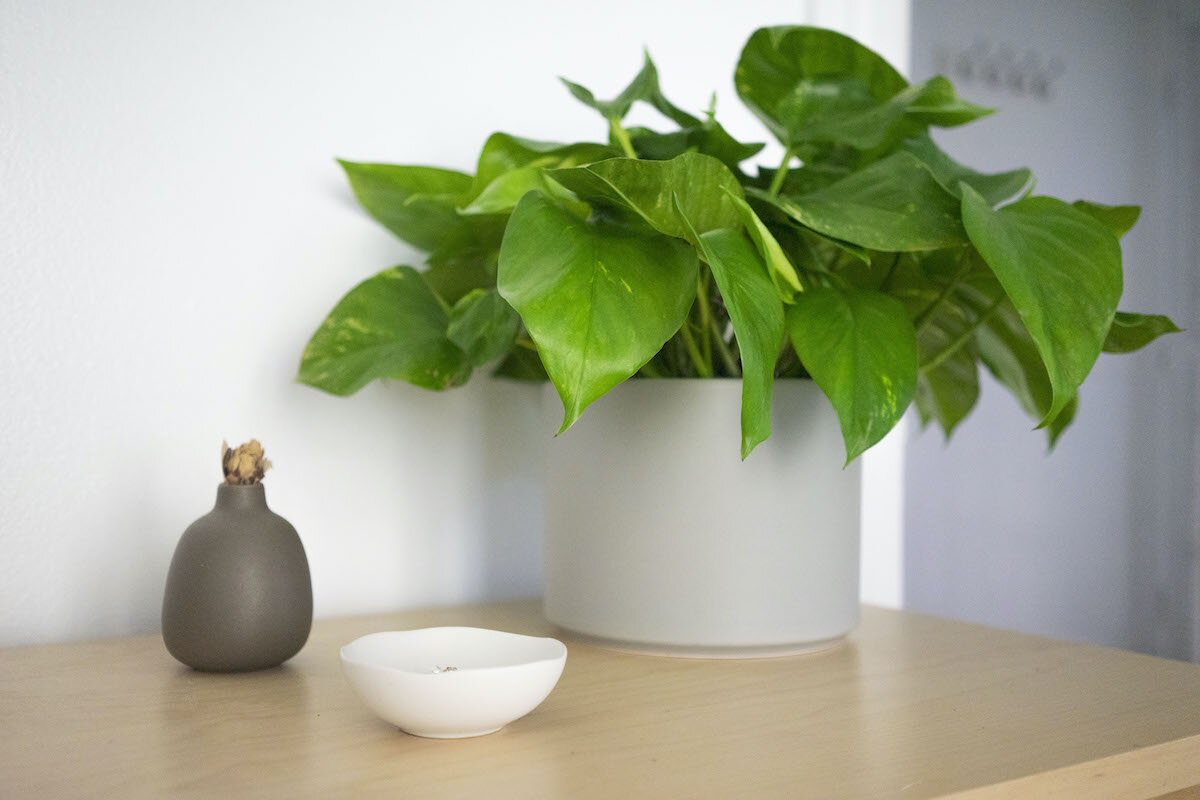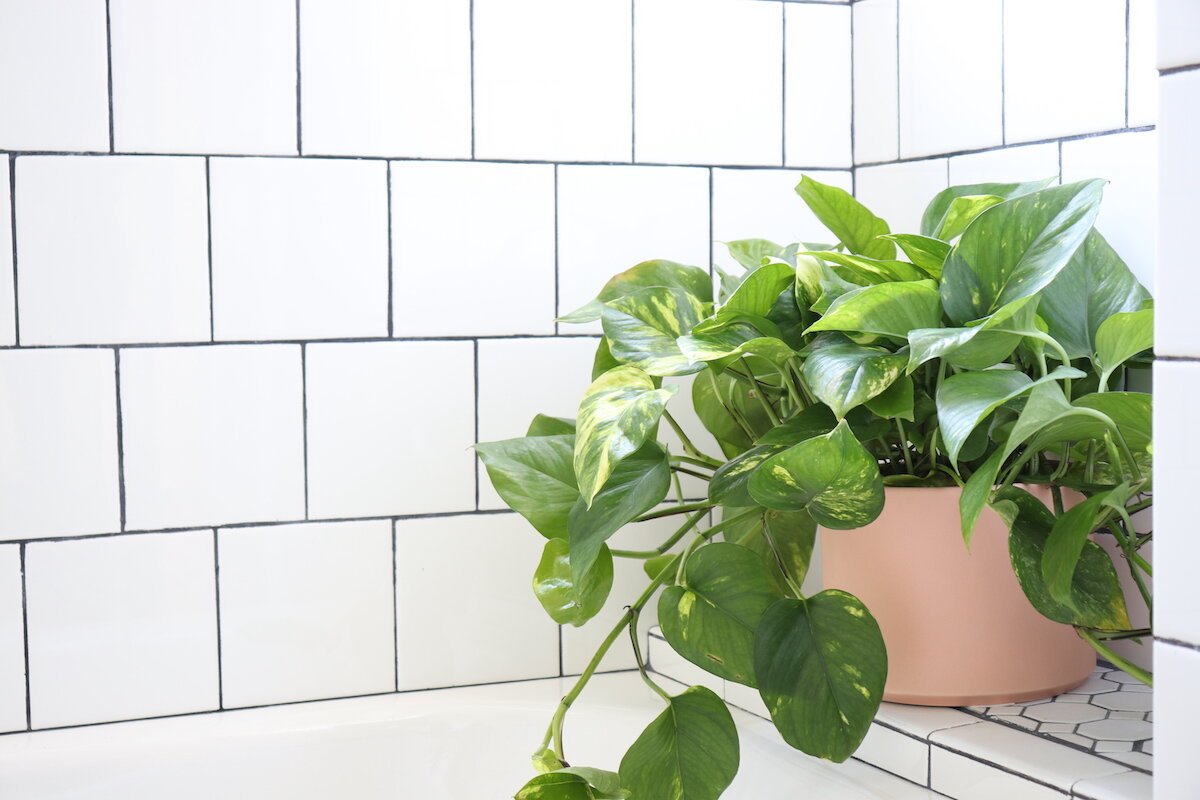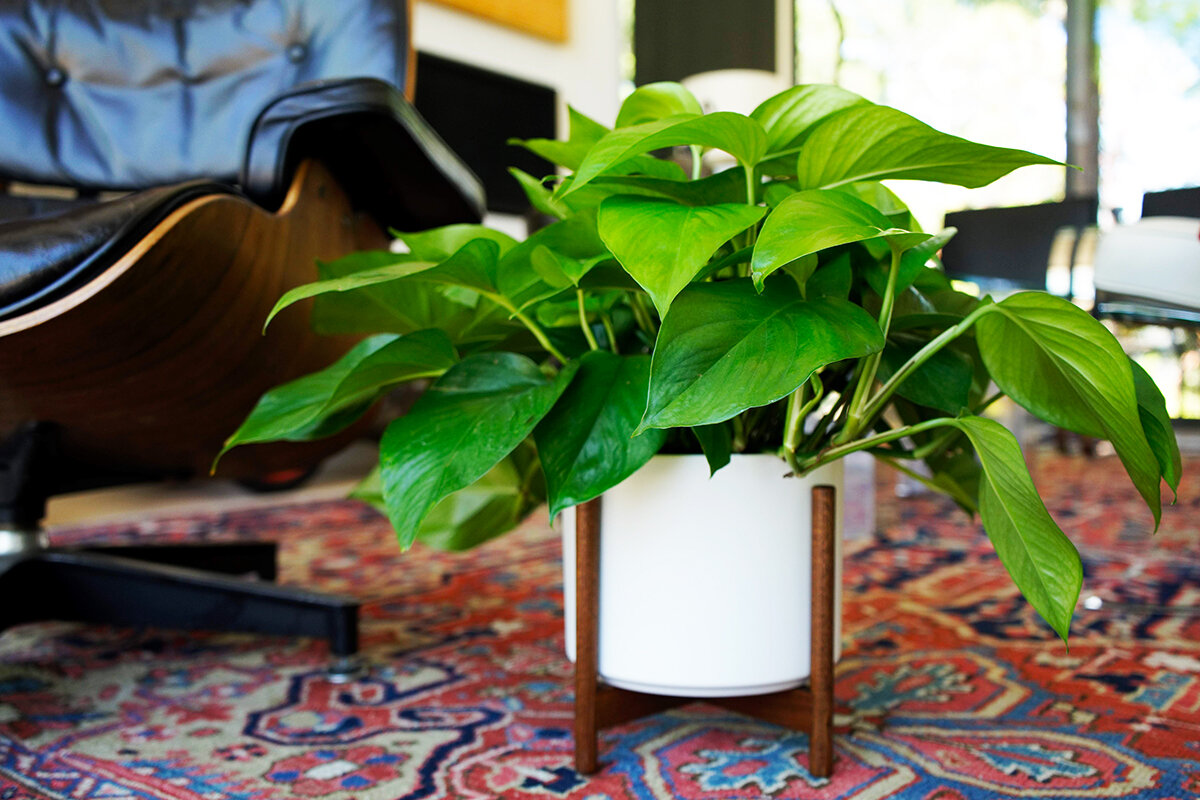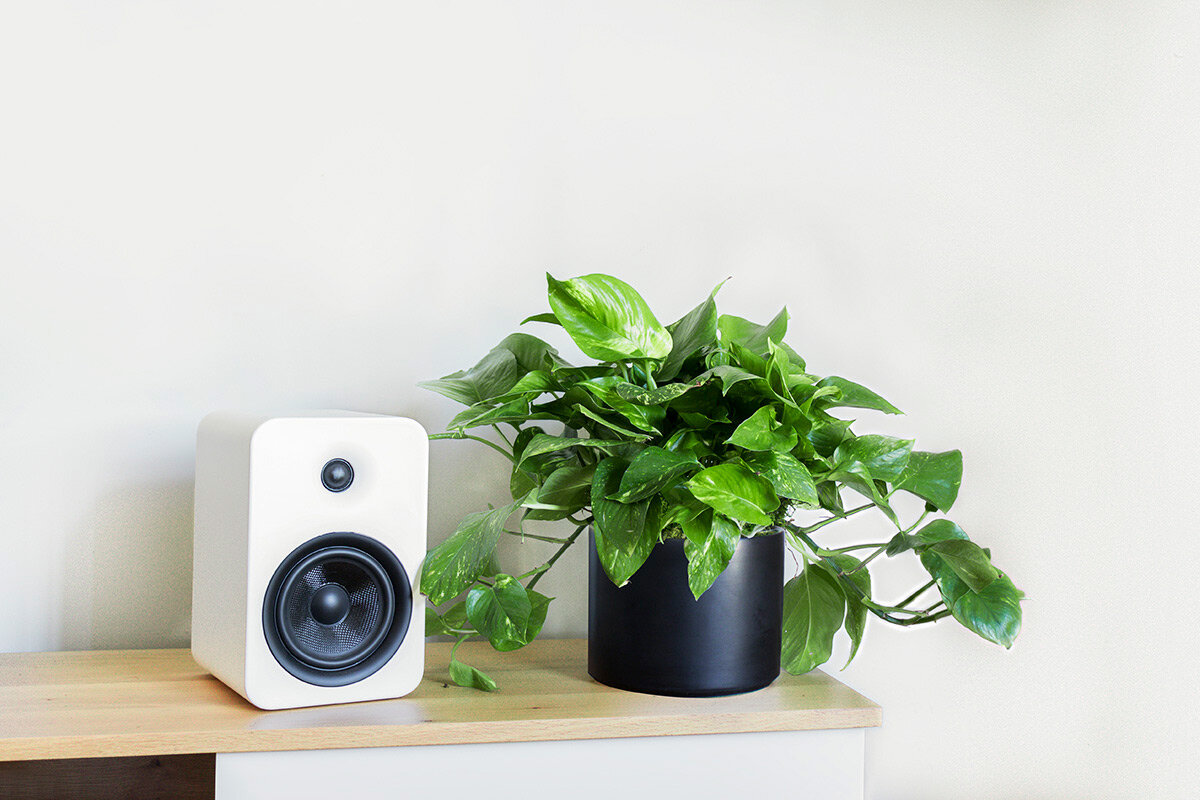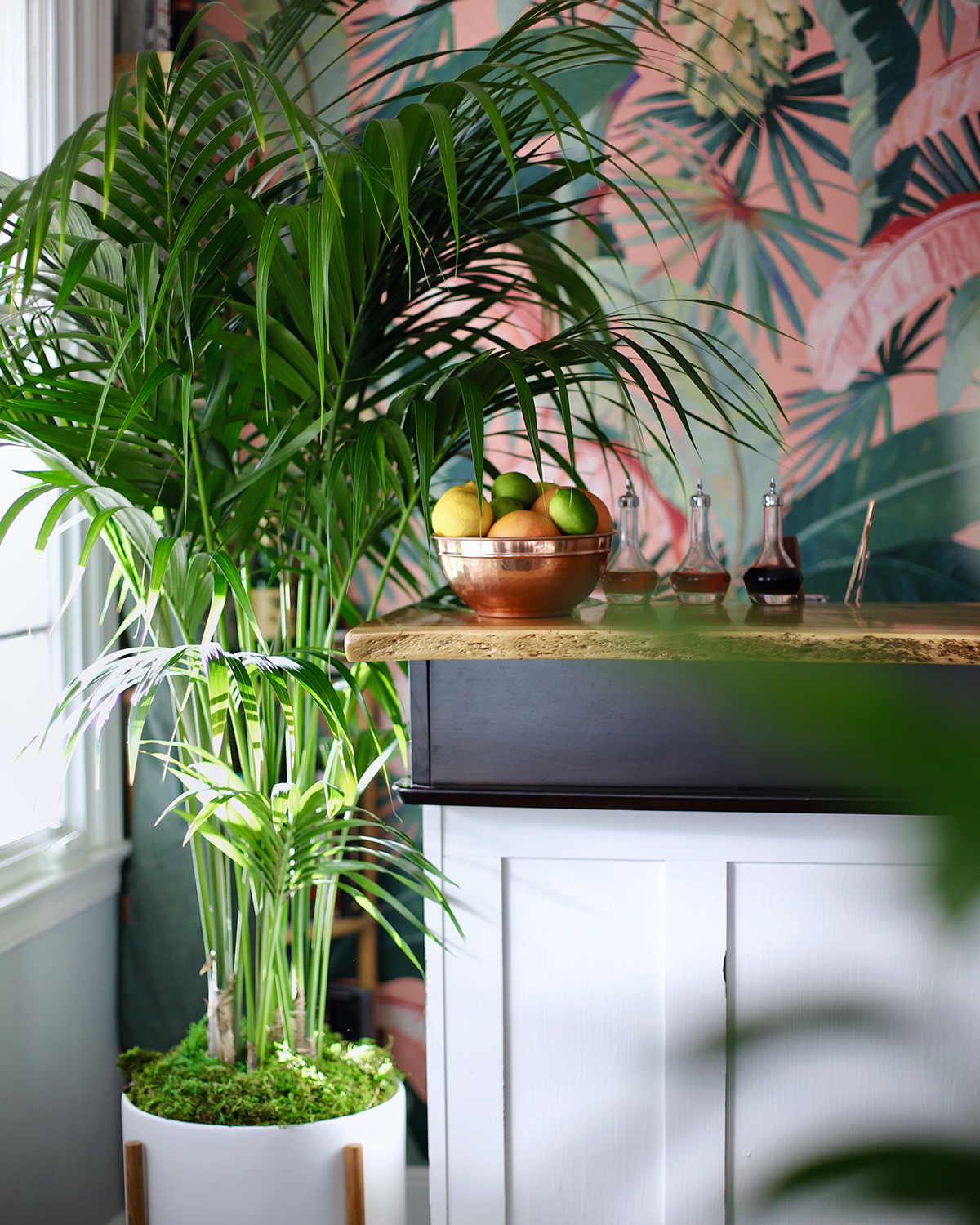Before and after of Cascading Pothos getting a good watering.
Why is my plant so droopy?
Noticed your plant’s leaves and vines looking extra droopy? Your plant is most likely very thirsty! Plants tend to droop when they’re thirsty due to the way they distribute water from roots to leaves. If the roots aren’t getting enough water, maintaining the ideal water pressure in the rest of the plant becomes very difficult, and the leaves droop or wilt.
While this is a common occurrence in many different plant varities, some of the most notable are Calatheas (who’s leaves will also curl when underwatered), Pothos (pictured above), Fiddle Leaf Figs and Peace Lilies.
How to revive droopy plants
The good news about droopy plants is that they are generally very easy to fix (and much easier to fix than a plant that has been overwatered). Here's how to get it looking perky and happy within hours:
Remove plant from its decorative planter and submerge the bottom of the nursery pot in a bucket filled with 2 inches of water. If your plant is potted directly in a planter with drainage hole, you can skip this step and place your plant with its pot in water.
Leave the plant for a few hours or up to a full day to soak up the water. It will either drink all the water from the bottom-up, or if there’s still water remaining, remove it and let it drain out before returning to its decorative planter.
Within 2 to 24 hours, come back and see your plant lush and full of life!
This method of watering is called bottom watering, and you can read our full guide on how to deeply water here.
Which plants will benefit from this technique?
Literally any thirsty plant! But you will find some are much more showy about it than others. Plants like Fiddle Leaf Figs, Calatheas, Peace Lilies, Rubber Trees, Pothos tend to droop more than others when thirsty, and their rebound will undoubtedly be very dramatic. Try it at home to bring life and lushness back to your thirsty plants!
Cascading Pothos
A popular, attractive, and truly easy-care plant, the Cascading Pothos has smooth and leathery heart-shaped leaves. They adapt easily to all environments and will grow quickly with minimal care, a perfect addition to refine any desk or shelf.
